Distinguished for its groundbreaking contributions to the automotive market, Innosimulation has emerged as a pivotal force in delivering intelligent mobility XR solutions and simulator systems. With the tools to envision and construct a world where XR and the metaverse provide limitless experiences, Innosimulation stands at the threshold of the future.
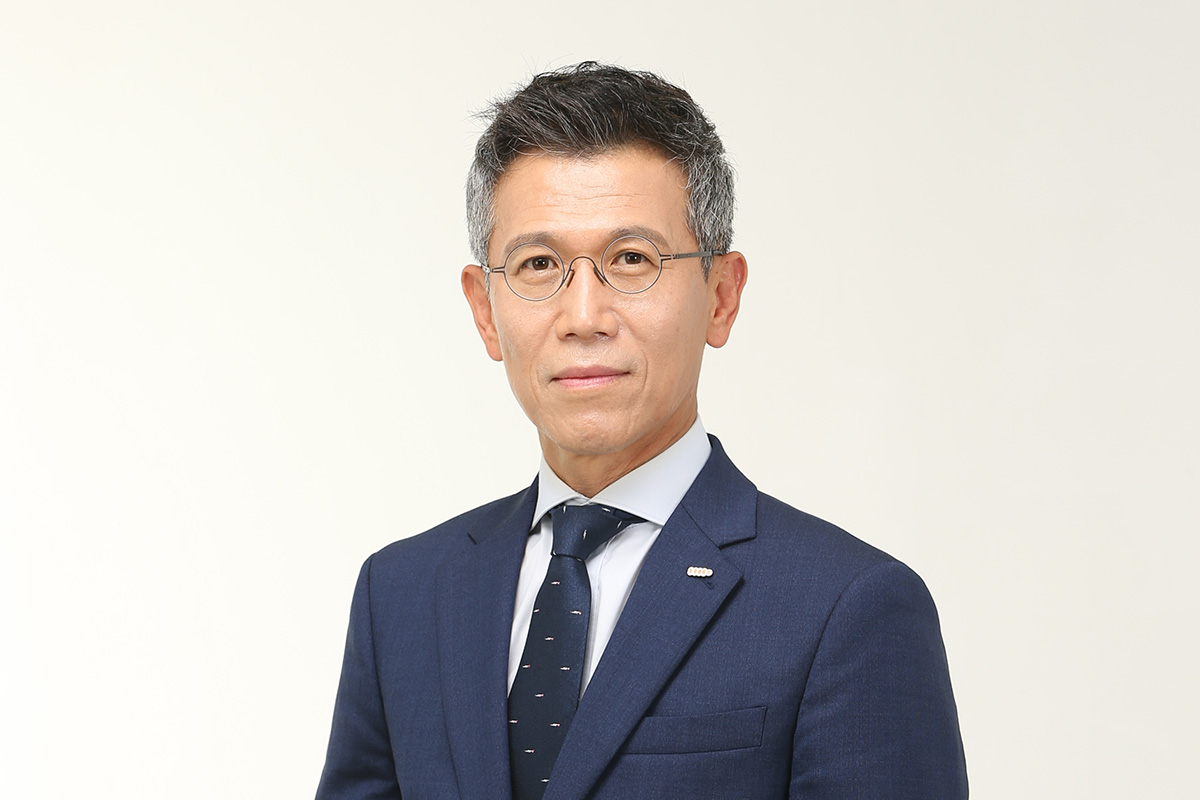
While VR is still in its early stages of application, it has been growing rapidly. In recent years, we witnessed significant investments from various tech-companies, not only in developing software and metaverses but also in making hardware, particularly headsets. However, VR has lost some momentum in recent month, especially when compared to other technologies such as AI language models. In your opinion, what is the future potential of VR and AR?
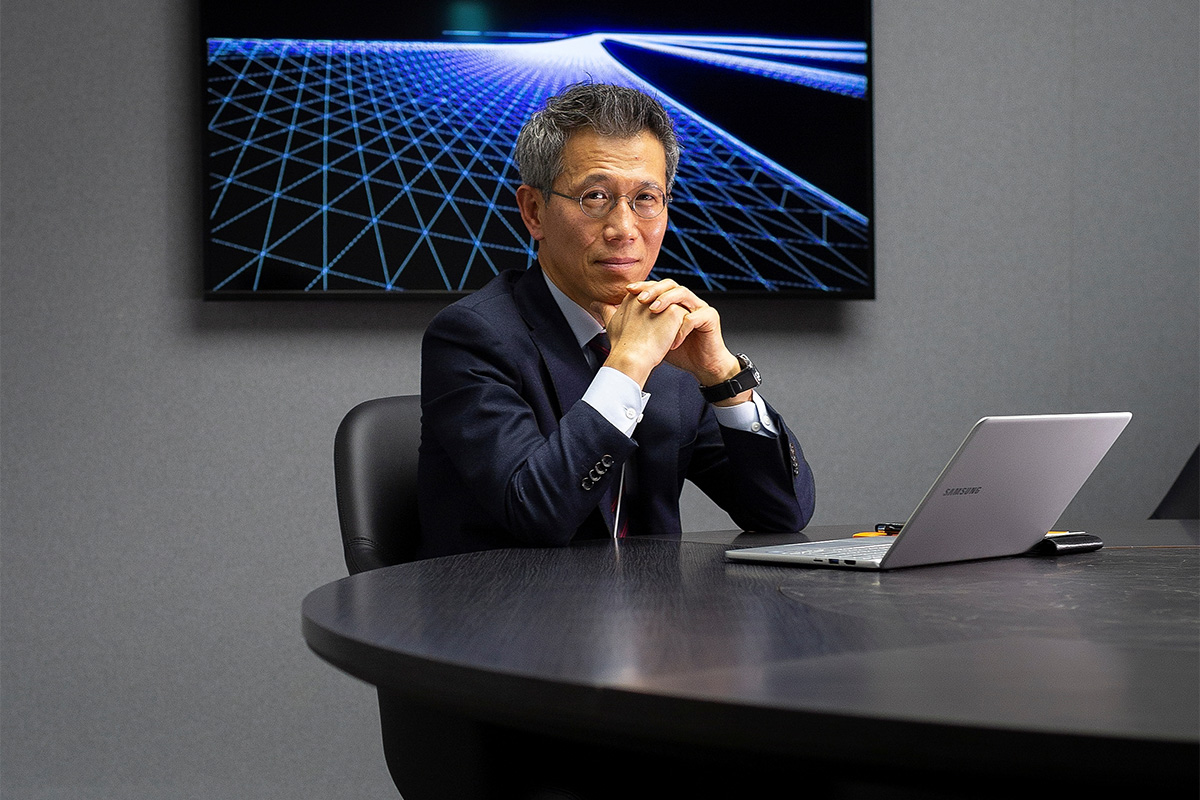
CEO Cho, Jun Hee, Ph.D in Automotive Engineering
The anticipation surrounding virtual reality was indeed high. About a decade ago, the release of the movie "Avatar" stirred incredible buzz. People were excited about the potential of 3D technology, leading to a surge in manufacturers producing 3D devices and related products. However, the availability of 3D content was not sufficient to fully leverage this technology. I see a striking resemblance in the trajectory of VR to that of 3D technology a decade ago.
For example, the movie "Ready Player One" presents a world on the brink of being revolutionized by VR. However, there are several technical challenges that need to be overcome to actualize VR technology, such as cognitive dissonance and VR sickness.
For any innovation to provide a new user experience, it is crucial for users to embrace it. However, implementing this innovation for a better user experience, especially in the consumer market, involves substantial costs and time. Such challenges can potentially impede progress. Nevertheless, with rapid technological advancements, companies like ours and other startups are tirelessly striving to develop new technologies that enhance user experiences.
Current obstacles, including cost and lack of investment, are gradually being resolved, and the situation is consistently improving. So, in the not-so-distant future, the experiences depicted in "Ready Player One" might indeed become a reality.
"Ready Player One" epitomizes immersive experiences, but current technological constraints, particularly in graphic processing units, hinder achieving comparable realism. The use of generative AI, instead of binary decision trees, could improve authenticity. Is the requisite technology in place now, and is it cost-effective to construct an experience as immersive as "Ready Player One"?
The technology already exists, but the issue lies in its affordability for widespread availability.
The South Korean government is aiming to make Korea one of the leading countries in the metaverse, having established a fund to attract talent for this purpose. What are your thoughts on the development of the metaverse in Korea, and how does it compare to the development of metaverses in other countries?
I'm involved in various organizations related to the metaverse, such as the Korea Metaverse Industry Association, Korea VR AR Metaverse Content Association, and the Metaverse Alliance. Many groups are indeed focused on the metaverse industry.
As mentioned, the government is also investing significant effort and resources in technological development and expanding the industry base. However, a clear definition of the metaverse remains elusive. We often conceive of the metaverse as a transformative world of VR or AR.
However, it is concerning to observe an abundance of redundant and ineffective content and platforms, which could potentially create a metaverse bubble. This is a global phenomenon, not limited to Korea alone. Notably, global players like Meta are downsizing their workforce, while simultaneously, we hear announcements from companies like Apple and Samsung about introducing VR headsets into the market.
Despite these uncertainties, one thing is clear: the XR market is growing. Research conducted for an IPO preparation reveals that the XR market size is expected to reach $136 billion next year. Putting aside the definition and technology of the metaverse, we are continuing to move forward and learn from our mistakes. We are gradually getting closer to the actual metaverse. In my view, the metaverse blurs the line between reality and virtual reality. I believe we will witness the realization of this world in the near future.
You noted that numerous VR/metaverse firms have generated content without practical use. In burgeoning industries, while startups are known to rapidly innovate at first, market consolidation eventually occurs. Small companies often struggle to transition from conceptualization to market introduction and scaling, a stage fraught with challenges. Could you discuss your journey from product design to commercialization?
Our initial investor, Daesung Venture Capital, has provided invaluable support, for which I am deeply grateful. Investments from government bodies or venture capital firms can indeed provide significant assistance to startups. It is worth mentioning that the Korean government is injecting billions of KRW into R&D to nurture new startups.
Like any other industry, I believe the ability to bring useful technology or products to the market is crucial for the metaverse industry. However, delivering practical systems or technologies in the VR market requires considerable effort, specialized knowledge, and expertise. Acquiring deep domain knowledge is essential.
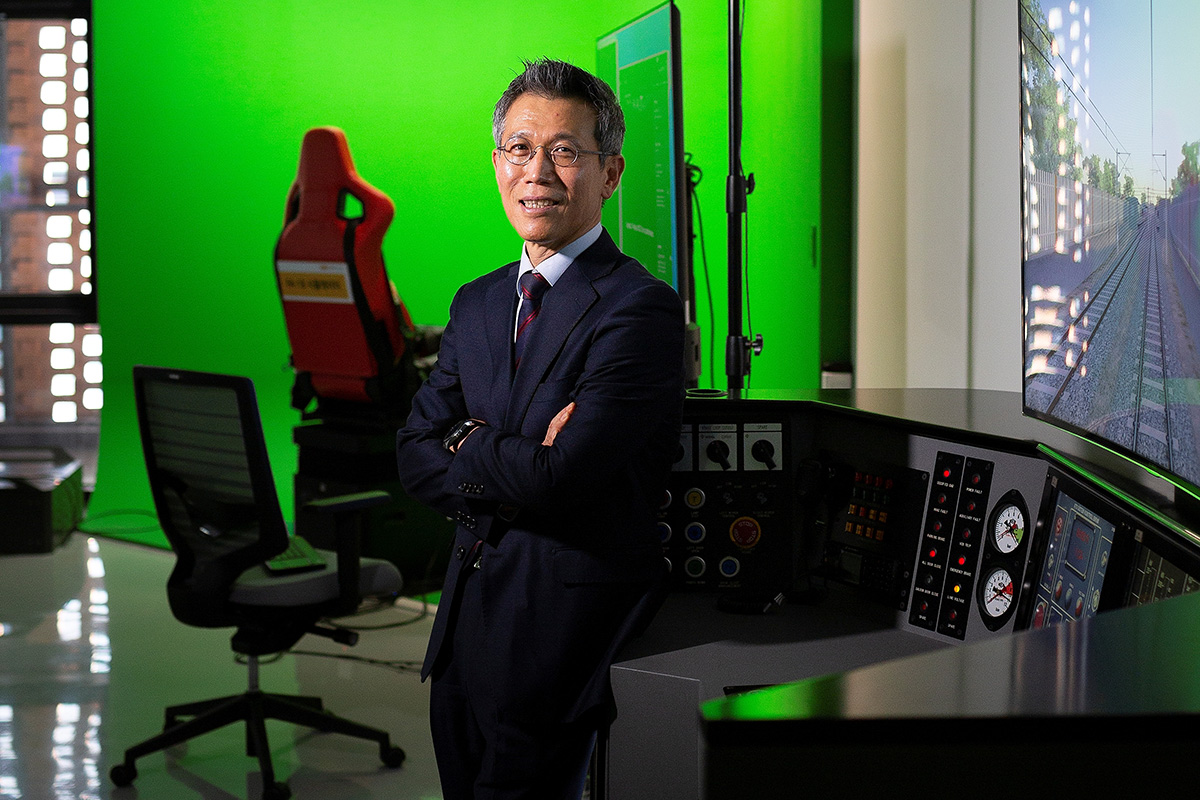
CEO Cho, Jun Hee in front of the Railway Operator Training Simulator for Hyundai's Rotem Turkey Railway Project
Startups often face challenges in attaining this level of domain knowledge. While they may excel in specific technologies, they also need to develop a comprehensive understanding of the relevant domain. When these two areas can be successfully merged, it lays a solid foundation for developing practical systems for the market. However, at present, many startups struggle to stay afloat and often miss out on opportunities.
What do you think are the industries that are going to drive the most amount of growth for your technology in the coming years?
I firmly believe that XR and VR are indispensable technologies, regardless of whether it's a B2B or B2C industry. These technologies have universal applicability across all sectors.
Our company was founded approximately 20 years ago, initially focusing on automobile driving simulations with Hyundai Motor Company as our sole client. During that time, we faced challenges in securing funding from the government and garnering significant interest from venture capitalists. This experience taught us the importance of acquiring knowledge in other domains. As a result, I approached Hyundai ROTEM, a locomotive manufacturer, and competed against a German and a French company to secure an order for the KTX Sancheon project's simulator systems.
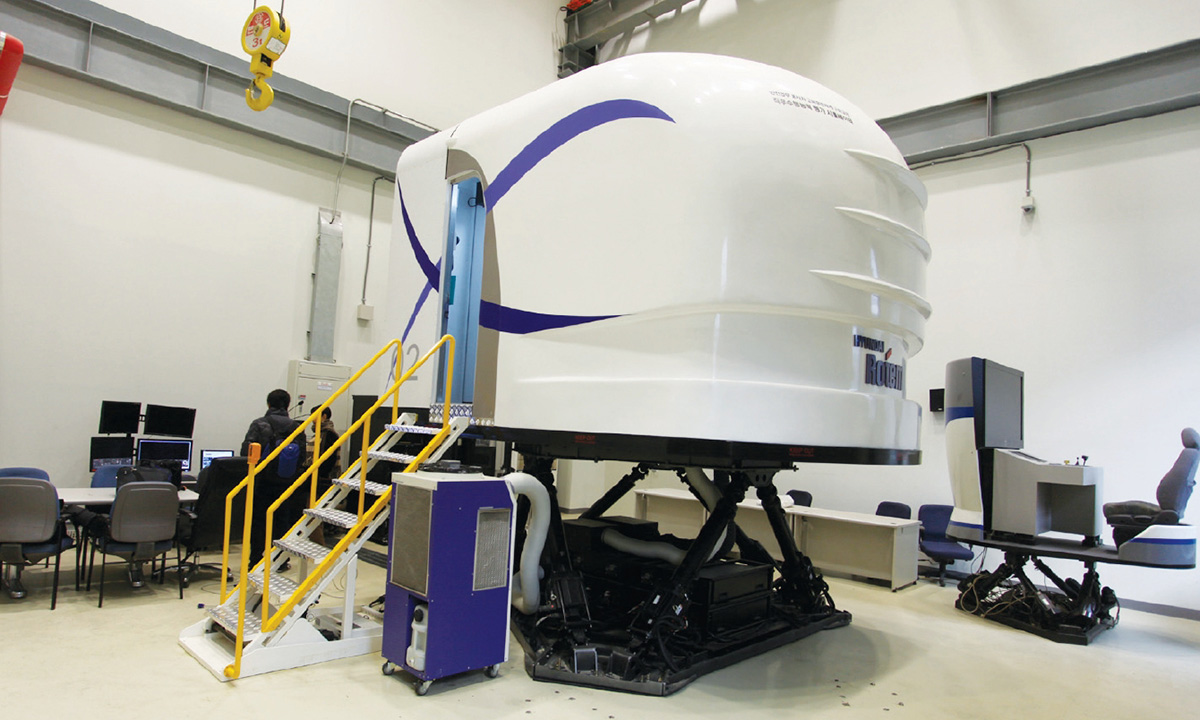
The KTX Sancheon project's simulator systems for Hyundai Rotem
Through persuasion and collaboration, we successfully secured the order for the railway simulator system, and subsequently for a heavy equipment simulator as well.
This experience highlighted the significance of applying domain knowledge to the mobility sector. We realized that once we possess this knowledge, we can extend our expertise to any industry. Currently, our focus is on becoming an excellent provider in the mobility sector, encompassing tanks, self-artillery, UAM, and UAV. By acquiring domain knowledge in these areas, we will be well-positioned to expand into other sectors such as digital healthcare. We believe we have the potential to achieve this and are keen on exploring these markets.
We are particularly interested in digital validation for autonomous vehicles, UAM and UAV, unmanned remote control stations, cloud-based virtual training for defense, medical and healthcare simulators, high-quality entertainment simulations, smart digital twins, and immersive digital content, and we are focusing our investment on developing core technologies in these areas. I firmly believe that the right combination of technology and domain knowledge can accomplish anything.
Over the past decade, South Korean SMEs have been known to prosper alongside domestic conglomerates. Nowadays however, the next challenge for Korea’s mid-sized enterprises is to diversify and internationalize their client base. How can collaboration with large enterprises help enhance service expansion and global competitiveness?
Responding to that question is quite challenging. We heavily rely on the downstream mobility industry, particularly on companies like Hyundai and Kia. For example, in the field of simulation, AV simulation excel in drive simulation and are considered the best in the industry.
In the past, I was a customer of AV simulation, and currently, they are our partners. When we sell simulators to China, our Chinese counterparts express a strong desire to collaborate with us. Although they possess the technology, they lack deep customer relationships. Without our assistance, they struggle to sell their products to Korean customers because we have established strong connections with them. This familiarity extends to Chinese and Japanese customers as well.
However, when it comes to the American market, we lack partnerships with companies like Ford, GM, or Tesla. These companies are highly protective of their intellectual property and technology transfer, which complicates matters. To thrive in the market, it is not enough to have a deep understanding of the industry; we must also possess technological capabilities that surpass those of our competitors.
For example, CAE, a Canadian simulator company with 60 years of experience, supplies products used by private jet operators and pilots worldwide. In contrast, our company was founded only 23 years ago. Nevertheless, we have managed to maintain a strong partnership with Airbus and Boeing, enabling us to provide cutting-edge flight simulation technology.
To remain competitive in the international market, we rely on the experiences we have gained from working with our clients and the trust they have in us. Our approach is to create excellent yet reasonably priced products, and to offer useful systems or simulators that fulfill our clients' technological needs. This approach is crucial for our survival and success in the global market.
INNOSIMULATION targets key defense sectors involving sensitive and often secretive technologies. Given the global emphasis on secrecy to avoid tech theft, how do you, as a Korean company, ensure security and confidentiality of sensitive information when partnering with international brands?
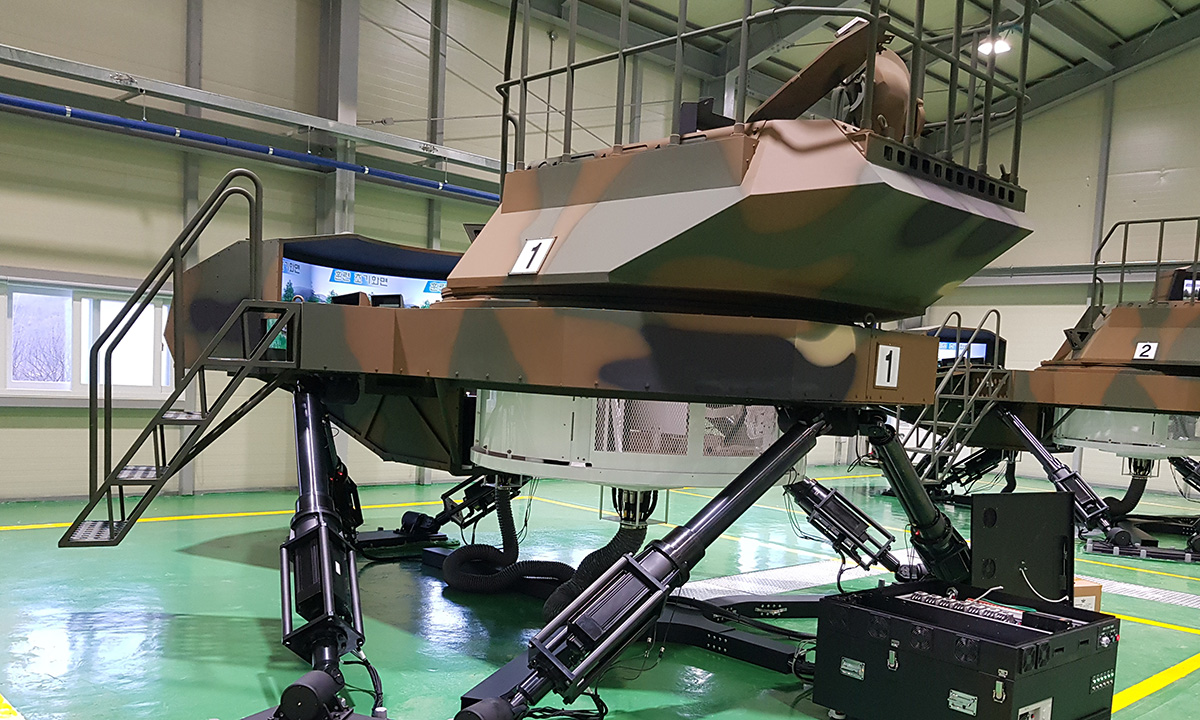
K-Series Tank Training Simulator
Creating a simulator necessitates engaging all five senses of the customers. The methodology to achieve this involves delicately handling sensitive and confidential information during the system development process. I believe this principle applies to the automotive industry as well. Electric Vehicles (EVs) from Hyundai and Tesla, for instance, share a fundamental architecture. This indicates that once we acquire expertise in developing simulator systems for these vehicles, we can replicate and offer our technology and solutions to other customers. This capability will serve as our entry barrier.
What was the reason behind the inception of INNOSIMULATION 23 years ago?
Back in 1996, I worked as an engineer at MANDO, an automotive parts manufacturer in Korea. My company encouraged me to pursue a master's degree for further studies. During this period, my professor, who later became the technical advisor for my company, was involved in a project with Hyundai Motor Company to develop a driving simulator. Recognizing my potential, my professor suggested that I should take on the responsibility of developing the simulator system and managing the project. This recommendation was primarily due to my seniority among the three members in the lab at that time.
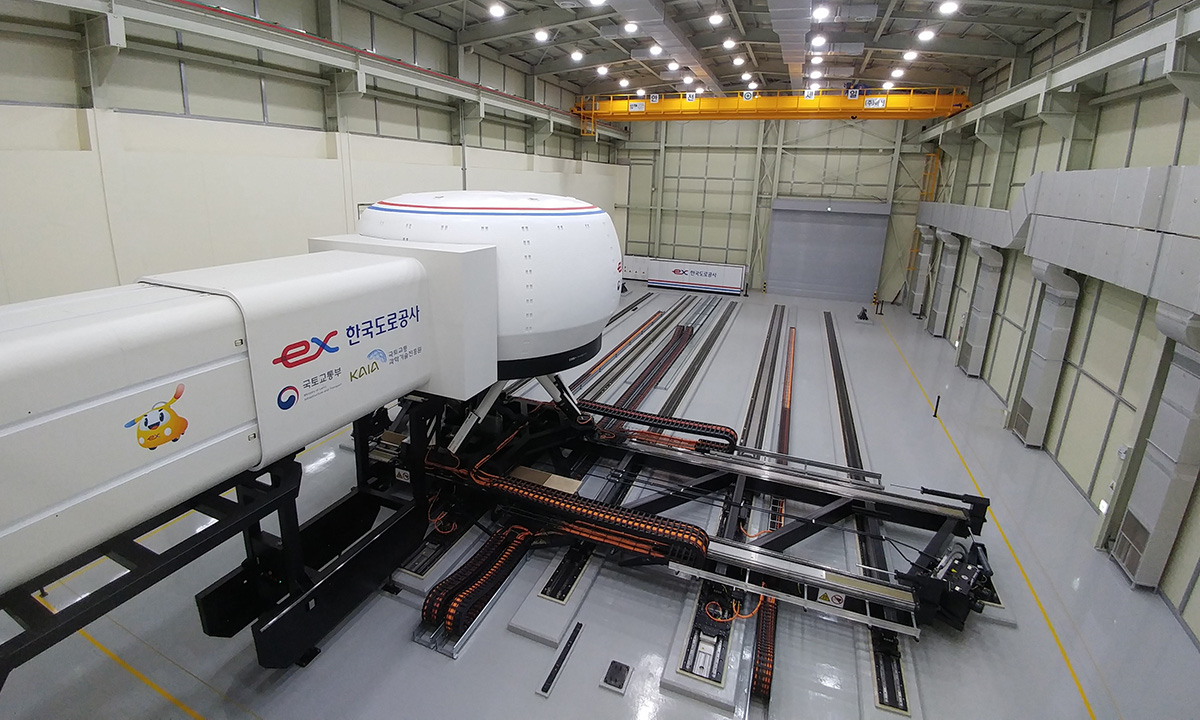
Global Top 3 Scale and Performance Advanced Driving Simulator for Korea Expressway Corporation
What is the company's vision for the next five years?
In the aftermath of the Asian Financial Crisis in 1997, the company I was working for unfortunately went bankrupt. This compelled me to pause my studies and reconsider my path. It became clear to me that starting my own company was the way forward, as there were no suitable places available at that time for me to study or experiment with simulation technology.
I sought advice from my professor and, even though it seemed distant at the time, I was filled with confidence, envisioning the world as it is today. Over the following 23 years, we encountered numerous challenges that we confronted head-on. Instead of succumbing to them, we approached each challenge one step at a time. Today, we have grown into a company that collaborates with nearly all major companies in Korea.
Our objective was to become the leading Korean XR solution provider, and I believe we are getting closer to achieving that goal. We aspire to become a globally recognized company, extending our reach beyond the domestic market to make a global impact. Recognizing that our growth cannot occur in isolation, as we operate in the B2B and B2G sectors, we understand the importance of collaboration.
Our vision is to create a future akin to the one depicted in the movie "Ready Player One." Alongside other leading companies, we aim to build a world where XR and the metaverse offer boundless experiences that blur the boundaries between reality and virtual reality. We are eager to collaborate with these pioneering companies and talented individuals to shape this future.
Can you run us through the process of offering a simulation to one of your clients?
Let me provide you with an example related to headlight simulation, which was our initial application of virtual testing for one of our clients. Despite having a Ph.D. in automotive engineering and possessing a deep understanding of automobiles, it doesn't mean that we are omniscient when it comes to all aspects of cars and vehicles.
Our current focus is to create an environment where customers can incorporate their unique expertise into a virtual reality (VR) setting. We offer a range of solutions, software technology, and hardware technology. Our approach involves modularizing these resources, allowing customers to customize their selections based on their specific needs. They can easily choose the technology that suits them best. Subsequently, we integrate these individual modules into a unified system tailored to the customer's preferences.
What is the most unusual or challenging simulation request a client has ever asked of you?
Every project I take on tends to be challenging and demanding. For example, when it comes to autonomous vehicles with their numerous sensors, clients initially approach us with a request for an environment where they can visualize sensor simulations. However, as we deliver the initial results, their requirements often escalate, calling for the simulation of physical sensors. This means simulating every parameter associated with the sensors, which requires in-depth understanding and knowledge of these technologies. Consequently, significant research investment is necessary to stay up-to-date with the latest sensor developments.
However, looking at it from a different perspective, the deeper our knowledge of sensors becomes, the stronger our position in the market also becomes. This expertise could potentially provide us with a competitive advantage.
To provide you with an example of a very fun project: In 2012, during the Yeosu EXPO, Lotte, one of our clients, originally approached a Belgian-Dutch simulation company for an unusual project. However, due to the tight timeline, the company declined. Subsequently, the project manager approached our company with the challenging task - to complete the project within a mere four months before the EXPO. Despite the pressure, we successfully delivered the project, which involved developing a hot air balloon simulator capable of accommodating 200 people!
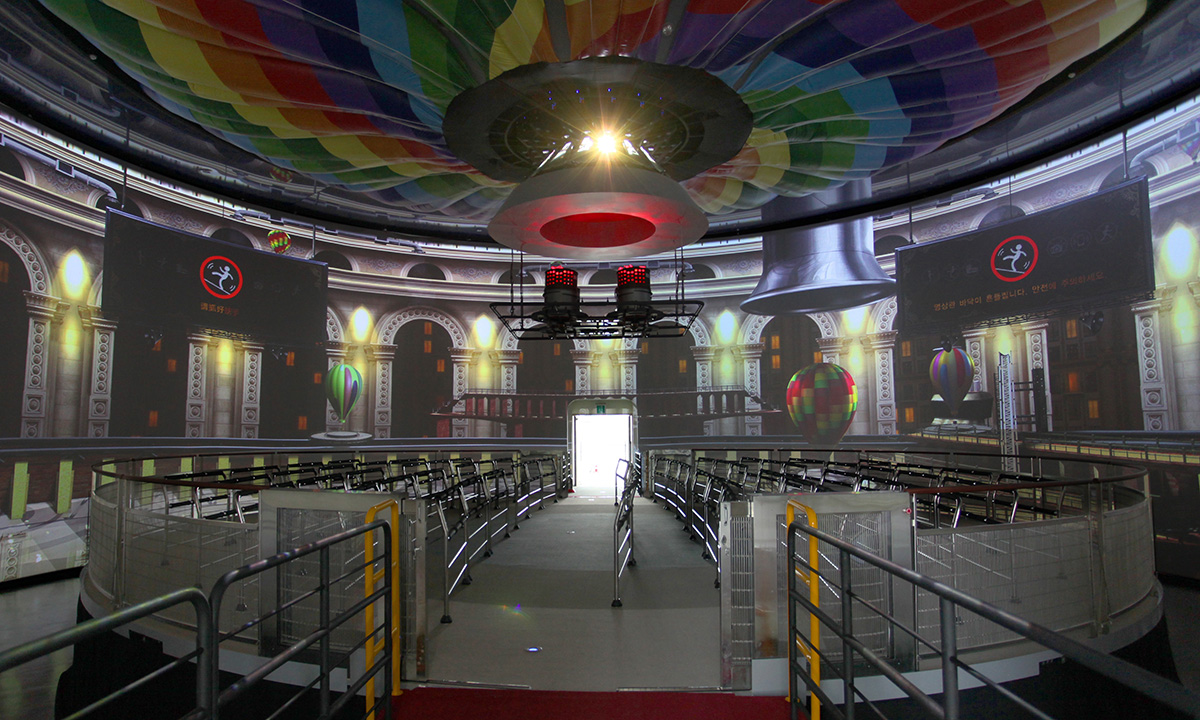
Hot Air Balloon Simulator for Lotte's Korea Yeosu Expo
How do you collaborate with international stakeholders to develop prompt solutions for your customers and gather more data to enhance the accuracy and realism of your simulations?
If a country has a special partnership that allows them to obtain a database from a third party, it can be advantageous. However, in our case, we need to generate our own database that meets specific standards compatible with our technology. For example, we recorded the data for railways in Turkey, Ukraine, and India, spanning several hundred kilometers.
Let's consider our project with the Ukrainian train driving simulator as an example. The Ukrainian railway operator provided us with two trains to gather the necessary data systems. Over the course of a month, we collected all the required datasets. It was a complex and expensive process.
In contrast, the Hyundai Motors project, which involved an 80-kilometer test track, only took three days using LiDAR technology for mapping purposes.
Is there a specific goal or ambition that you would like to accomplish within the next 7 years?
On July 6th, 2023, our company successfully completed its initial public offering (IPO) and began trading on the Korea stock market (KOSDAQ). While many may perceive this as the culmination of our journey, I view it as a significant step rather than the ultimate goal. My unwavering aspiration is to establish our company as the leading XR company in Korea, and I am fully aware that we have not yet reached that position due to the substantial technological challenges that lie ahead. However, the process of going public will undoubtedly propel us closer to realizing that dream. Therefore, when we celebrate our 30th anniversary in 2030, I hope to confidently announce that we have indeed become Korea's premier XR company.
0 COMMENTS